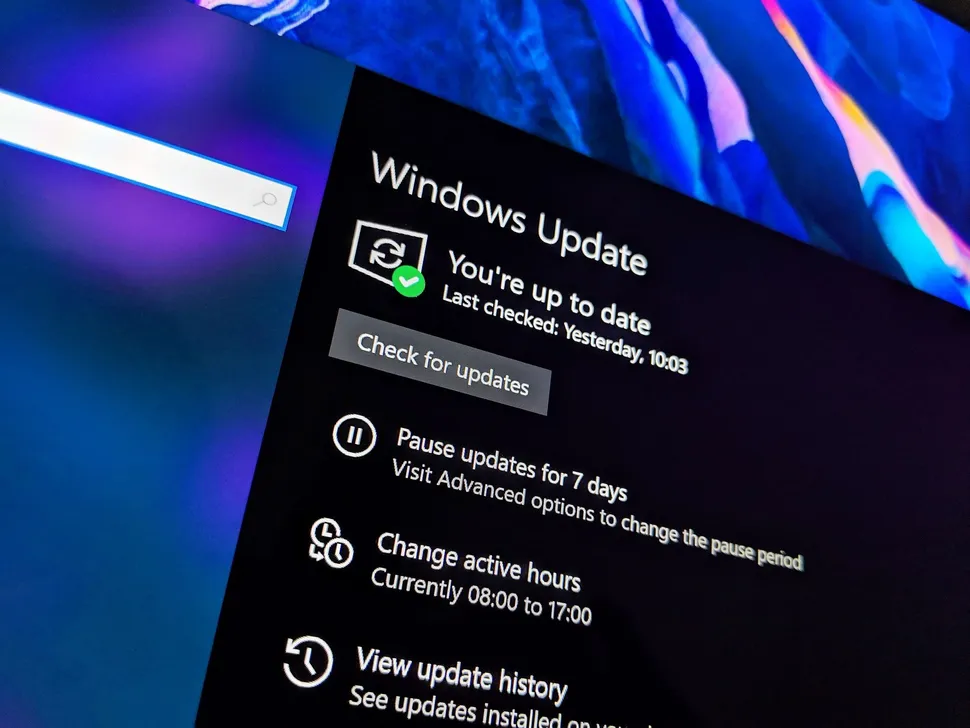
Windows 10 Is Now in Its Final Year of Free Support — Here's What You Need to Know
As we approach the end of 2024, an important milestone for Microsoft users looms on the horizon: Windows 10 is entering its final year of free support. This transition raises many questions for individuals and businesses still relying on the popular operating system.

Here’s a comprehensive guide to what this change means, what you need to do, and how to prepare for the future of your Windows experience.
What Does End of Free Support Mean?
Microsoft provides two types of support for its operating systems:
- Mainstream Support: Includes feature updates, security patches, and non-security bug fixes. This phase ended for Windows 10 in October 2020.
- Extended Support: Focuses on critical security updates to keep your system protected from vulnerabilities. Windows 10 will exit this phase on October 14, 2025.
Once extended support ends, Microsoft will no longer provide free updates or fixes, leaving unsupported systems vulnerable to emerging security threats.
Who Will Be Affected?
The end of free support impacts all Windows 10 Home and Pro users, as well as many businesses still operating on this system. While enterprises using Windows 10 Enterprise Long-Term Servicing Channel (LTSC) versions may receive extended timelines, the vast majority of Windows 10 installations will no longer be updated after October 2025.
Why Is Microsoft Phasing Out Windows 10?
Microsoft's lifecycle policy encourages users to adopt the latest technology. With the release of Windows 11 in October 2021, the company has been gradually shifting focus to its newest operating system. Windows 11 promises enhanced security, better performance, and modern features, making it the preferred choice moving forward.
Phasing out Windows 10 allows Microsoft to concentrate resources on improving Windows 11 while ensuring users adopt systems better equipped for today’s digital landscape.
What Are Your Options After October 2025?
When free support ends, you have several options:
1. Upgrade to Windows 11
This is the simplest and cheapest option for you to choose. Windows 11 is a free upgrade for all Windows 10 users, as long as you're using a PC with supported hardware. Windows 11's system requirements are quite strict, but if your PC is modern enough, you should be able to upgrade to Windows 11 for free and remain supported with security updates and new features for free for many years to come.
Steps to upgrade:
- Ensure your PC meets the Windows 11 minimum requirements.
- Use the PC Health Check tool to confirm compatibility.
- Follow the upgrade process through Windows Update or Microsoft’s installation assistant.

2. Buy a new Windows 11 PC
Option 2 is a much more expensive endeavour which will require you to purchase a new Windows 11 PC. If your existing PC is old and unsupported on Windows 11, this is your only legitimate choice if you intend to move on from Windows 10. Windows 11 PCs come in all shapes, sizes, and price points, so you can shop around for the best Windows 11 PCs that fit your criteria.
If you are looking to buy a new Windows 11 PC, I would recommend a new Copilot+ PC as they only launched this year and support new AI features and experiences that non Copilot+ PCs don't. If you're looking to buy a PC for longevity, get a Copilot+ PC.

3. Pay for Windows 10 updates
If you simply don't like Windows 11 and want to stay on Windows 10 for as long as possible, there is a third option for you: Pay for support. Microsoft has announced that it will allow both commercial and consumer users to pay for continued support on Windows 10 for the first time ever.
For consumers, Microsoft will charge for a single year of additional security updates. These updates will keep your Windows 10 PC secure until October 14, 2026. Consumers can only pay for extended support for one extra year. After October 2026, you will no longer be supported.
Commercial customers can expect to pay a varied amount every year for each device they want to continue to support on Windows 10 beyond 2025. Microsoft only intends to offer this support for up to three years, meaning after 2028, commercial users will have no choice but to upgrade to a newer version of Windows.

3. Move to Linux or Mac
It's an extreme choice for sure, but if you simply can't stomach Windows 11 or can't afford to upgrade your PC, there are alternatives out there. You could move to Linux on your existing PC or buy a Mac.
Moving to Linux on an existing PC is the cheapest of the two options, and there are many different Linux distributions to choose from. Linux can be quite complex, so this isn't an option I'd recommend for your average Windows PC user. However, it is an option if you're willing to put in the time to learn how to do it.
Ubuntu is probably the easiest Linux distribution to dip your toe into, and so that's the one I'd recommend trying if you've never used Linux before. You can create a live install USB, which will let you poke around Ubuntu before even installing it, so give that a go if Windows 11 really isn't for you.
If Linux isn't for you and you have the money, you can also buy a Mac. Whether that's a desktop Mac or a MacBook is up to you, but the latest Macs will be supported with macOS for many years to come. Apple usually supports a Mac for around 7-10 years, depending on the configuration you choose.
Both of these choices will be quite the learning curve if you've never used either before. Linux and macOS are very different from Windows, so you may need to give yourself time to learn the ropes of a new operating system.
Key Considerations for Businesses
For businesses, the end of support has broader implications:
- Security Compliance: Running unsupported software can result in legal or regulatory non-compliance.
- Operational Risks: Outdated systems are more prone to breaches, malware, and system failures.
- Cost Management: Delaying upgrades might increase costs, as emergency updates or migration assistance could come at a premium.
Businesses should start planning a migration strategy to avoid disruptions. Engage with IT experts to evaluate your current infrastructure and ensure a smooth transition to Windows 11 or alternative systems.
How to Prepare for the Transition
1. Audit Your Current Systems
- Identify devices running Windows 10 and evaluate their compatibility with Windows 11.
2. Plan Your Budget
- Factor in costs for new hardware if existing systems don’t meet Windows 11 requirements.
- Consider licensing or subscription fees for alternatives like Microsoft 365.
3. Backup Critical Data
- Before making any system changes, create secure backups of important files and data.
4. Educate Your Team
- Inform team members about the upcoming changes and provide training on new operating systems if needed.
What Happens If You Miss the Deadline?
Missing the October 2025 deadline doesn’t mean your system will stop working immediately, but it will become increasingly vulnerable. Unsupported systems are frequent targets for cyberattacks, and over time, third-party applications and hardware drivers may cease compatibility.
Don’t Wait — Act Now
The clock is ticking for Windows 10 users. Whether you’re a home user or a business, planning ahead is crucial to avoid the risks of running unsupported software. Start exploring your upgrade options today, ensure your systems are prepared for the transition, and take advantage of Microsoft’s resources to make the shift as seamless as possible.
By acting now, you’ll be ready to embrace the future of computing with minimal disruption. Windows 11 is here to stay — is your system ready for the change?

Amilma Digital
Creative Digital Agency from Bosnia and Herzegovina
Leave a comment
Your email address will not be published. Required fields are marked *
